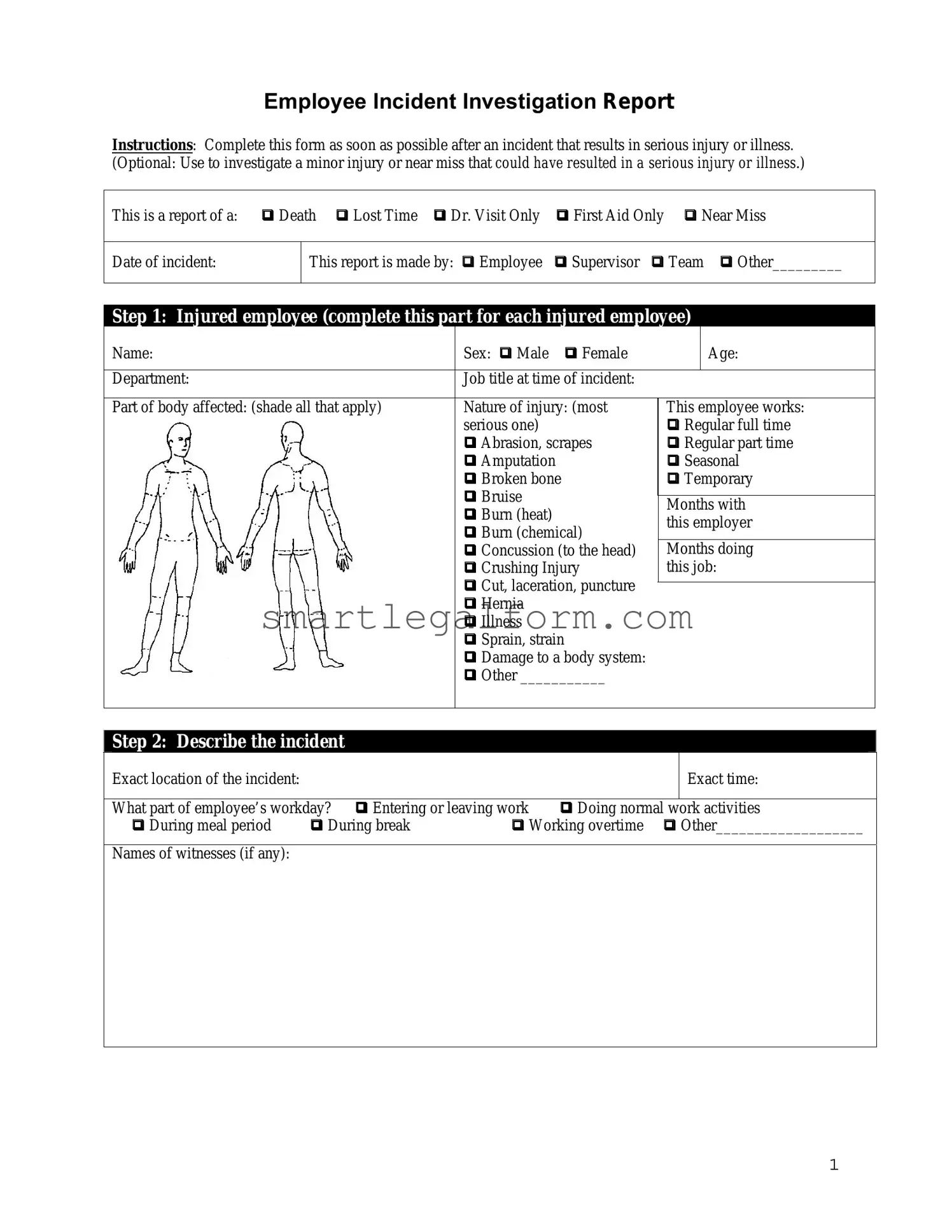Filling out an Employee Accident Report form is crucial for documenting workplace incidents. However, many individuals make common mistakes that can lead to complications in the claims process. One frequent error is failing to provide complete information. Omitting details about the accident, such as the time, location, and specific circumstances, can hinder the investigation and resolution.
Another mistake involves not including witness statements. If there were colleagues present during the incident, their accounts can provide valuable context. Neglecting to gather this information can weaken the report and leave out important perspectives.
Inaccurate descriptions of the injury itself can also pose problems. Individuals may downplay or exaggerate their injuries, which can lead to discrepancies in medical evaluations. It is essential to document injuries factually and without bias.
Timing is critical when submitting the report. Delaying the completion of the form can result in lost details and may raise questions about the legitimacy of the claim. It is advisable to fill out the report as soon as possible after the incident.
Some people forget to sign and date the report. A signature is a confirmation that the information provided is accurate to the best of the individual’s knowledge. Without it, the report may be considered incomplete.
Additionally, failing to follow company procedures can create issues. Each organization may have specific guidelines for reporting accidents. Ignoring these protocols can lead to delays or even denial of claims.
Another common mistake is neglecting to communicate with supervisors or HR personnel. Keeping these parties informed about the accident and the report is essential for ensuring proper follow-up and support.
People often overlook the importance of keeping a copy of the report for their records. Having a personal copy can be beneficial for future reference, especially if disputes arise regarding the incident.
Lastly, many individuals do not seek medical attention promptly after an accident. Even if injuries seem minor, it is crucial to get evaluated by a healthcare professional. This not only ensures proper treatment but also creates a medical record that can support any claims made in the report.



